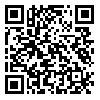BibTeX | RIS | EndNote | Medlars | ProCite | Reference Manager | RefWorks
Send citation to:
URL: http://jdisabilstud.org/article-1-3232-en.html
2- Associate Professor, Department of Educational Sciences, University of Guilan, Rasht, Iran
3- Assistant Professor, Department of Psychology, Gorgan Branch, Islamic Azad University, Gorgan, Iran
Abstract
Background & Objectives: Addiction as a psychological and social harm endangers the health of the individual and society. Various psychological factors play a role in explaining addiction. One of the characteristics of addiction is its high recurrence rate, and one of the related factors is failure in the prevention and treatment of addiction. The sense of cohesion and impulsivity are two important psychological factors that can explain psychological health. In addition, they can also play a role in explaining factors related to vulnerability to addiction, such as increasing the tendency to addiction. Considering the importance of drug craving in addiction prevention and the continuation of the recovery and addiction treatment process, in the present study, the role of impulsivity as a mediator in the relationship between a sense of coherence and craving in drug addicts who are quitting has been investigated.
Methods: The current research method used a correlational type, and structural equation modeling was used. The statistical population of the current study consisted of drug addicts who are quitting in Rasht City, Iran, in 2023. A total of 370 volunteer addicts were selected using convenience sampling. The method of conducting the research was that the researcher was allowed to enter addiction treatment centers with an introduction letter from the university. In four months, the research questionnaires were distributed among the drug addicts who were quitting. The inclusion criteria included having at least elementary literacy, being 18 to 50 years old, and lacking chronic physical diseases (such as diabetes). In this study, detailed explanations were given to the participants about the nature of the research, the research tools, and the confidentiality of information so they could participate with informed consent and ethical considerations were observed. Participants responded to the Craving Questionnaire (Somoza et al., 1995), the Sense of Coherence Questionnaire (Antonovsky, 1993), and the Barratt Impulsivity Scale (Patton, 1995). Data were analyzed using SPSS version 23 and Amos version 23 software at a significance level < 0.05.
Results: Examining the goodness of fit indices of the model revealed that the proposed model had a good fit (χ2/df=3.46, RMSEA=0.08, GFI=0.98, AGFI=0.94, NFI=0.90, IFI=0.93, CFI=0.92). Also, the results showed that sense of coherence had a direct and significant effect on impulsivity (p<0.001, β=–0.38) and drug craving (p<0.001, β=–0.16). Impulsivity had a direct and significant effect on drug craving (p<0.001, β=0.34). Impulsivity plays a mediating role in the relationship between a sense of coherence and drug craving (p<0.001, β=–0.12).
Conclusion: The findings of the research indicate the mediating role of impulsivity in the relationship between the sense of coherence and drug craving. Therefore, by increasing the sense of coherence and reducing impulsivity, the drug cravings in drug addicts who are quitting can be reduced.
| Rights and permissions | |
 |
This work is licensed under a Creative Commons Attribution-NonCommercial 4.0 International License. |



